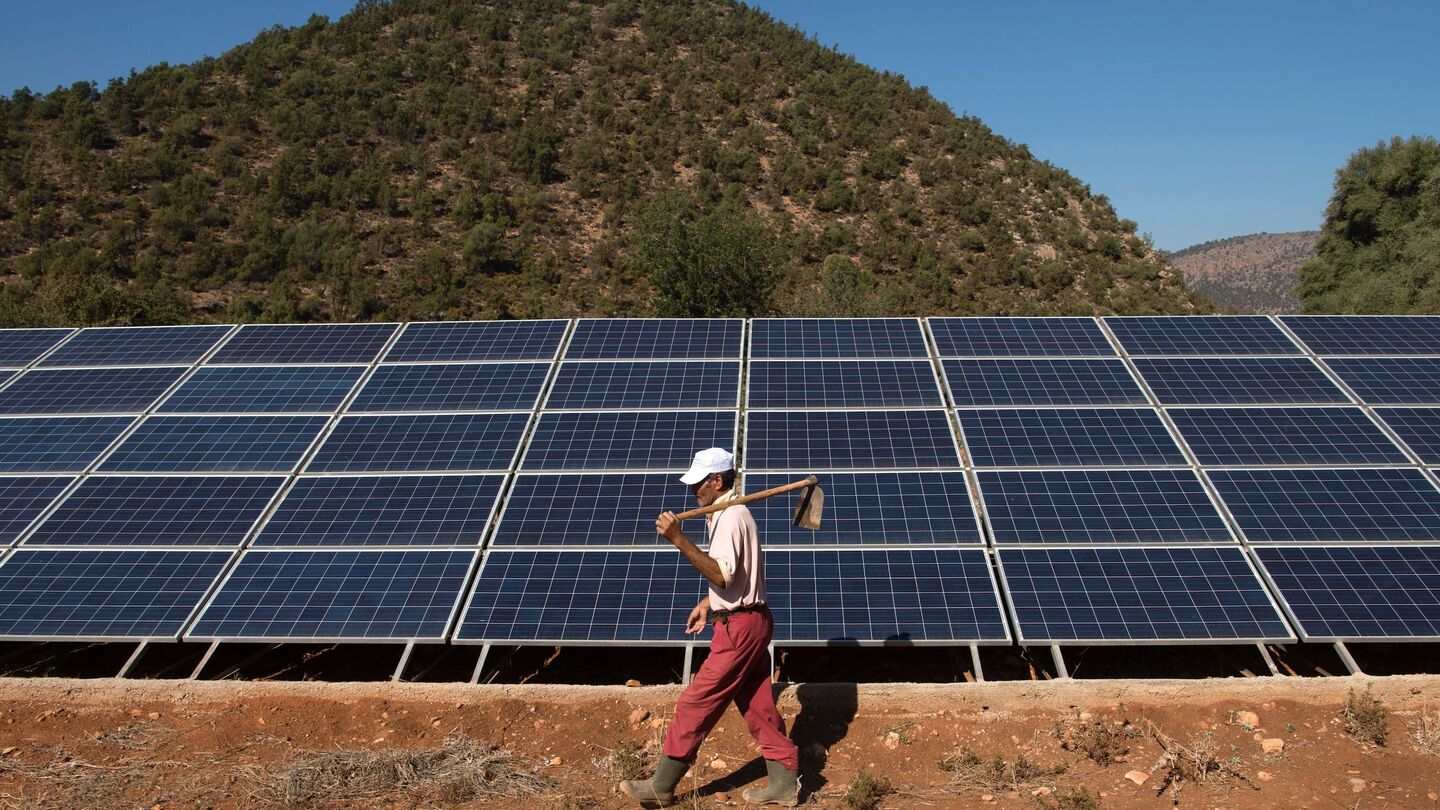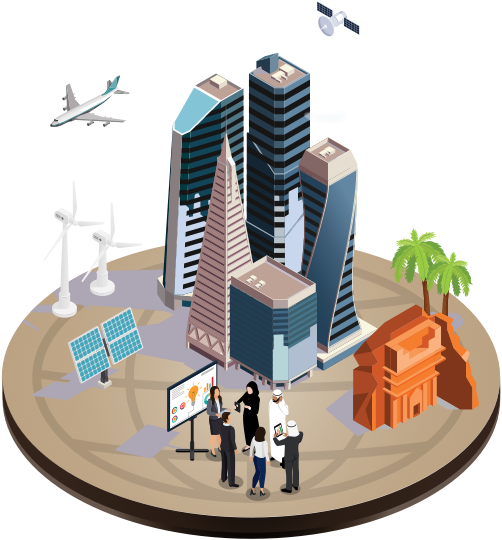
How North Africa’s renewable energy regulations can boost FDI
June 2023 Al-Monitor PRO Trend Report
3577 words
Introduction
In June 2023, Belgian engineering company Tractebel announced that it had started construction work on a major renewable energy project in Egypt. When finished, the Red Sea Wind Energy project, located in Egypt’s Gulf of Suez region, will be the largest single wind farm in terms of capacity in the Middle East and North Africa (MENA). The wind farm will power up to one million homes as Egypt works towards its plans to generate 42% of its electricity from renewable sources by 2035.
This is just one example of an increasing number of renewable projects that are taking shape in the North Africa region. The venture — which includes Belgian, Japanese, French and local Egyptian companies — also demonstrates the interest foreign investors and institutions are taking in North Africa’s renewable energy industry. Foreign direct investment (FDI) in renewables in the MENA region is likely to have reached record highs in 2022, with the Economist Intelligence Unit noting in a May report that “the outlook remains reasonably bright for further foreign investment in renewables.”
Part of the reason for North Africa’s success in achieving higher levels of FDI is that many of the region’s national governments have recognized the importance of establishing sound regulations to attract foreign investors, and over the years, the region has taken concrete steps to put in place a regulatory environment conducive to FDI within its renewable energy space.
Jamil Wyne, founder of the Climate Tech Bootcamp and adjunct professor at George Washington University, told Al-Monitor that “putting the correct regulatory frameworks in place show investors in and outside of the region that governments are taking the renewables game seriously, and that the conditions for investing are improving, at least in theory. Just like in any other sector, when the government lays out the 'rules of the game,' at a bare minimum it signifies to the market that it wants to attract more investment, both domestically and from abroad.”
MENA hosted the COP27 climate change conference in Sharm el-Sheikh last year, with Dubai being the host for COP28 in November and December 2023. As the region gears up to host its second global environmental conference in the space of twelve months, it is likely that more North African countries will seek to make further progress on the green transition. Enhancing regulatory frameworks and attracting greater amounts of foreign investment will be a crucial part of this.
1. State of Play
Morocco has emerged as North Africa’s primary market for renewable energy. Last year, the consultancy firm EY placed Morocco as first globally in a ranking that assesses a country’s renewables market in accordance with the overall size of its economy. In 2021, Morocco’s supply of renewable energy grew by 10% compared to the year before, reaching 7.9 terawatt hours (TWh). This means that renewables now represent almost 20% of the country’s total energy market. While the government has invested considerable sums in renewables — with over $5 billion committed to solar energy projects so far alone — FDI has also played a significant role. FDI Intelligence ranks Morocco as the third most attractive market globally for foreign investment in 2023 because of its lucrative renewables space. This is partly because of Morocco’s established regulatory framework for the sector. In 2010, the country passed its first piece of legislation relating to renewable energies, which was updated in 2016. This established an “authorization regime” which means that individuals or entities producing renewable energy must fulfill certain conditions before production, showing they have the relevant technology to generate energy safely. Morocco’s national grid, the National Office of Electricity and Drinking Water (ONEE), has a monopoly over electricity production in the country, and therefore renewable energy operators must satisfy specific quotas to ONEE. With the permission of ONEE, operators may sell up to 20% of any excess electricity produced to commercial entities. Morocco has recently taken its first steps towards establishing a green hydrogen industry, with plans announced in early 2023 to begin developing a research and development process.
Algeria is Africa’s largest exporter of natural gas but has announced ambitions plans to expand its renewable energy infrastructure and particularly facilities related to solar energy. In 2021, the Algerian government announced that it intended to secure foreign investment to help the country reach 15,000 megawatts (MW) of electricity generation capacity from renewable resources by 2035. If this target were met, that would mean up to 40% of electricity for domestic consumption would be produced from renewable sources. While Algeria has historically required majority Algerian ownership in “strategic sectors” such as energy, the country decided in 2021 to allow non-Algerian entities have a majority stake in renewables projects — in a bid to make Algeria a more attractive market for foreign investors. There are legal obligations, however, for foreign companies to use manufacturers based in the country as well as meet environmental guidelines. As part of the strategy announced in 2021, Algeria also passed a new regulatory framework that includes financial incentives “to benefit activities promoting research and development in, or deployment of, renewable energy.” Algeria has particular ambitions in the field of green hydrogen: as part of its National Hydrogen Development Strategy, established in 2021, the country intends to produce 40 terawatt hours of green hydrogen by 2040, with a large percentage destined for export to Europe.
In 2021, just 3% of Tunisia’s electricity was generated from renewable sources. However, the Tunisian government has taken several steps to encourage private sector investment in the country’s renewable energy space. For one, although Tunisia’s state power utility company, the Tunisian Company of Electricity and Gas (STEG), tried to resist this, the Tunisian parliament passed an energy law in 2015 that sought to facilitate the activities of independent power producers (IPPs). The government has since awarded solar and wind projects to dozens of private companies. To help meet increasing electricity demand, in July 2021 the government announced it was abolishing the requirement to pre-authorize renewable energy production for private self-productions of amounts not exceeding 1MW. This liberalizing measure follows a similar move in May 2019, when the Tunisian parliament passed a law designed to improve the business climate for renewables. This allows companies to produce their own renewable energy, with the process costing less than buying electricity at market prices. Furthermore, any excess power can be sold to STEG, with the price determined by the Ministry of Energy. Like Morocco, Tunisia has only taken early steps towards green hydrogen. Tunis began developing its national strategy for green hydrogen in early 2022 and aims to finalize it by 2024.
Libya lacks a comprehensive regulatory framework for renewable energies. Renewable energy projects are not subject to standard rules or criteria, with terms decided during individual negotiations between investors and public authorities. The legal and regulatory bases of the industry are therefore shaky. In 2007, the Libyan government established the Renewable Energy Authority of Libya (REAOL) with the aim of encouraging the industry’s growth, but its impact has so far been limited.
Egypt’s government aims for renewable energies to contribute 42% of the country’s power capacity by 2035, and recognizes that a favorable regulatory framework for private sector players is an important part of achieving this. Indeed, the task of promoting investment in renewable energy is embedded in the Egyptian Constitution. According to the International Renewable Energy Agency (IRENA), the Renewable Energy Law in 2014 aimed “to support the creation of a favorable economic environment for a significant increase in renewable energy investment in the county,” while a prime ministerial decree the following year provided regulations indicating how state land could be allocated to renewable projects at a discounted price. Regulatory incentives for private enterprises include set feed-in tariffs, guaranteed access to the national grid, long-term power purchase agreements, and a net-metering scheme. There are no minimum capital requirements for renewable energy companies, and Egyptian law requires no specific licenses to incorporate a renewable energy company, although licenses are required to establish a renewables project and begin operating. Egypt does not have any green hydrogen facilities, although foreign investors and institutions believe Cairo has significant potential in this area. The European Bank for Reconstruction and Development (EBRD) announced in November 2022 that it was supporting the construction of Egypt’s first green hydrogen facility with a $80 million loan. The “Egypt Green” project, located in the coastal town of Ain Sokhna, is being built and operated by Emirati firm Fertiglobe, Norwegian company Scatec ASA, Egyptian firm Orascom Construction, as well as the Sovereign Fund of Egypt. The Egyptian government reportedly wishes to invest $40 billion in a national hydrogen plan, which could prompt further FDI.
2. Breakdown by Type of Renewable
The United Nations defines renewable energy as “energy derived from natural sources that are replenished at a higher rate than they are consumed.” There are numerous different types of renewable energy, but, according to IRENA, the three most significant renewables in North Africa are hydropower (clean hydrogen), wind power and solar power.
The regulation of hydropower (clean energy), which is the most widely used renewable energy source in North Africa and worldwide, tends to be overseen by governmental ministries, such as the Ministry of Energy and Mining in Algeria. Hydropower has often been considered controversial owing to the perception that it is unsafe, because of its flammability. While the legal framework for hydropower is still evolving, much of the current body of law that exists is focused on mitigating potential environmental impacts and safety concerns. For example, in Egypt, hydropower generators are subject to both the Environment Protection Law of 1994, and Law No. 7 of 2010, which regulates Nuclear and Radiological Activities. There are large discrepancies within North Africa when it comes to production volume. The region overall has just over 90,000 GWh of generation potential. Egypt has the largest hydropower potential, with a generation capacity of 50,000 gigawatt hours (GWh), while Tunisia has only 250 GWh, and Libya has no identified capacity. Foreign investment has played a large role in developing this capacity. The volume of FDI in new wind and solar energy projects in Egypt doubled to $3.5 billion in 2022.
The most successful regulation for wind power in North Africa has involved establishing liberal frameworks aimed at encouraging private production. In 2020, Tunisia approved a net-metering law that allows individuals and small companies producing wind power (and other forms of renewable energy) to sell excess electricity to large energy consumers and the national power utility. Land restrictions are an important sub-area of wind power regulation. Tunisia has taken a liberal regulatory approach in granting planning permission. With 95% of wind farm land still being used for agriculture, Tunisia has also shown how land can be used efficiently for dual purposes. The region has an installable capacity of 223 gigawatts of wind power, with the two biggest producers of wind energy in North Africa being Morocco at 1,788MW, and Egypt at 1,702MW. The Gulf of Suez has been of particular interest for foreign investors, with the region home to a 501.7MW onshore wind power project that is due to enter into commercial operations in 2025. The $660 million scheme is being funded by a consortium of French, Egyptian and Japanese firms. The project has also been supported by the EBRD and the Green Climate Fund, which in April 2023 announced it would lend $100 million for the construction of the wind farm.
When it comes to solar power, the biggest challenge is net metering. This refers to a system through which citizens and small businesses that own solar panels can be financially compensated for the electricity they produce. Several countries have attempted to make their net metering regulations such that more people are incentivized to produce solar power. The Egyptian government amended their net metering regulations in 2018 to make them applicable to larger plants with a capacity of up to 20MW rather than 500KW, bringing more people and businesses into the scheme. They have also sought to ensure regular, fixed settlements of payments, which are made monthly through net metering devices, to offer financial certainty to producers. North Africa currently has an installable capacity of 2,792 gigawatts of solar power, with the biggest players again being Morocco and Egypt. However, there has been significant levels of FDI in markets such as Tunisia and Algeria. British company TuNur is looking to produce 4.5 GWh of electricity through solar and wind power in Tunisia for export to Italy, France and Malta. The plans involve building the world’s largest solar power plant, with TuNur’s CEO announcing in August 2022 that the company is considering an initial investment of 1.5 billion euros ($1.6 billion).
3. Outlook
• Wyne thinks that global economic and humanitarian trends could encourage North African governments to look more closely at the potential of renewable energy and the associated regulatory frameworks. He told Al-Monitor that relatively wealthy countries in North Africa, such as Morocco, Algeria, and Egypt see the industry’s economic potential. “There’s an interesting and important confluence of factors here,” he said. “Governments in the region are seeing a growing global business case around renewables — the world is simply moving in that direction – and COP28 helps to augment that. At the same time, there’s also a need to diversify the energy mix in the region, irrespective of how wealthy they are.”
• Wyne added that there is also a humanitarian argument for the uptake of renewables, which is likely to be attractive to poorer countries such as Libya. He said that “there are development and humanitarian challenges that can be abetted by countries adopting renewables. For example, the 'green transition' will categorically be a massive job creator worldwide. From this angle, renewables don’t just make commercial sense, but also become a humanitarian imperative.”
• Jeffrey Beyer, founder and director of Zest Associates, a sustainability-focused consultancy firm based in Dubai, thinks that COP28 could be a significant moment for the renewable energy sector in MENA but believes that efforts will be more targeted at unlocking private sector investment into the space, particularly in solar and wind energy. This would require progress on regulation as foreign investors usually demand a sound and predictable legal environment. “COP28 is a huge opportunity to showcase the region’s ambitions for renewables and all other climate mitigation and adoption initiatives,” Beyer said. “I expect that one focus of COP28 will be to accelerate the financing and construction of mature and cost-competitive technologies like solar and wind, especially in emerging and developing economies. These countries need to leapfrog into distributed renewable generation that pairs energy access with climate compatible development.”
• Jasem Alanizy, a senior lawyer in Dubai who advises on renewable energy projects across MENA, believes that Egypt in particular could be about to launch ambitious projects and perhaps make further progress on its regulatory framework. “There’s a huge drive for renewable energy in Egypt, mainly because of a growing population that needs levels of domestic energy production that are currently not being fulfilled,” he said.
• Meriam Hamdi, a technical advisor specializing in renewable energies at GIZ in Rabat, thinks that the volatility on energy markets seen last year after Russia’s invasion of Ukraine could prompt MENA countries to dedicate more time and resources to developing renewable energy frameworks this year. This is particularly true for those with exporting ambitions, such as Morocco, Algeria, and Tunisia. “The war between Ukraine and Russia and skyrocketing prices mean that the European Union and others are trying to shift away from Russian gas. To do that they need an alternative, and one of those alternatives is green hydrogen. Many countries, including Morocco, Egypt and Saudi Arabia have already announced projects related to the production of green hydrogen,” she said. “So, I think this is a very good opportunity for those countries to rethink their energy strategy, shift to other technologies, and work towards renewable energies.”
• Hamdi “hopes that this year will bring more foreign investment in renewable energy because global inflation, according to many economic analysts, is set to decline. Inflation has impacted on the ability of foreign investors to go into other markets, and foreign investors have been a driving force behind renewable energy for countries such as Morocco.” The potential for increased foreign investment could offer further incentives to ensure the regulatory environment is as attractive as possible.
4. Case Study: Morocco
In the most recent edition of EY’s biannual Renewable Energy Country Attractiveness Index (RECAI), released in November 2022, Morocco leads the region in renewable energy. The country ranks 19th in the world and is the only MENA country to make it into the top 20. The report notes that Morocco has achieved success that is disproportionate to the size of their economy: while the World Bank estimates Morocco’s GDP to be relatively low at around $133 billion, the country has outperformed in the number and sophistication of renewable energy pipelines that it has constructed. The Noor Ouarzazate complex in central Morocco, for example, is the largest concentrated solar farm in the world and produces enough power to supply 1.3 million people. Tarfaya, a coastal town in southeastern Morocco, is home to one of the largest wind farms in Africa.
Part of this success is undoubtedly due to the strong measures taken by the government, which sees renewables as a way to improve Morocco’s energy security and independence, with Rabat currently importing around 90% of its energy. At times, Morocco has been unable to meet domestic electricity demand, such as when its neighbor Algeria (with which it has hostile relations) temporarily closed the Maghreb-Europe gas pipeline in October 2021. Since King Mohammed VI first presented his vision for the renewables space in 2009, the Moroccan state has invested 130 million dirhams ($13 billion) in green energy, one of the largest public investments in Moroccan history. In December 2022, state-owned phosphates and fertilizer producer, the Moroccan Office Chérifien des Phosphates (OCP), pledged to invest $13 billion to ensure fertilizer production is powered entirely through renewables by 2027. The injection of state cash has undoubtedly been an important factor in driving the fast development of Morocco’s renewable energy industry.
However, the report also outlines how Morocco has also made important strides in building a competitive infrastructure for renewables — one that is attractive to foreign investors. The Moroccan government has sought to improve the business environment generally by, for example, establishing the Tangier-Mediterranean Special Economic Zone (TMSEZ). In this zone, foreign investors can benefit from tax emptions, easier access to financing and less bureaucracy. Strategic partnerships, such as that signed between Morocco and the International Renewable Energy Agency (IRENA) in June 2021 to strengthen joint collaboration on the energy transition, have further bolstered Morocco’s credentials as a regional powerhouse for renewables in the eyes of foreign investors.
As a result, it is little surprise that several major foreign companies have committed substantial funds to Morocco’s renewables space. In February 2022, Total Eren, a subsidiary of French oil company TotalEnergies, said it would invest 9.4 billion euros ($10.2 billion) in a hydrogen and green ammonia project based in Morocco’s southern Guelmim-Oued Nou region. In November 2022, German company Conenergy announced it would invest $7 million in the Xlinks project, a new initiative to transport green energy from Morocco the United Kingdom through an undersea pipeline. In March 2023, the international energy and water company TAQA, which is listed on the Abu Dhabi Securities Exchange (ADX), pledged to invest $1.6 billion in Moroccan green energy by 2030.
5. Key Takeaways
➡ Director-General of IRENA, Francesco La Camera, told Al-Monitorthat North Africa should work on establishing common regulations and creating a unified electricity market in order to power the industry’s growth in the region. “COMELEC, the supranational committee between Morocco, Algeria, Tunisia, Libya and Mauritania for coordinating energy policy and liberalization efforts, especially regarding the transmission networks of the member states, is key for the North African region and beyond,” he said. “A wider pan-Arab single electricity market with common business rules will enable faster adoption of renewable energy into the system and facilitate an accelerated energy transition.”
➡ There is an economically lucrative opportunity, La Camera believes, for MENA countries to export renewable energy to other markets, such as Europe, but more work on the regulatory front is required before this opportunity can be seized. Morocco, Algeria, Tunisia, and Egypt all have exporting ambitions. “There is also an opportunity, offered by green hydrogen production, for decarbonizing the heavy industries that are based in the region, as well as for exporting to neighboring regions such as Europe,” La Camera said. “For an ambitious green hydrogen production and export scenario, it is important to set up the required renewable energy production facilities, create infrastructure for transport, increase storage and generate conformity to the relevant technical standards of export destinations.”
➡ Beyer suggests that, while approaches to regulation differ dramatically across the region, “in all cases, it’s critical to have policy consistency and streamlined permitting and interconnection rules. Countries should also include system operation improvements to maintain grid stability with a high penetration of renewables, and make sure transmission infrastructure is built to quickly connect production spots to the grid.”
➡ Hamdi noted that, in some MENA countries such as Morocco, there remain financial disincentives for renewable energy production that should be revisited. “In Morocco, individual producers can only sell 20% of their annual production to commercial clients,” she said. “That’s not very encouraging for people considering becoming a producer.”
➡ In order to take full advantage of the opportunity, however, some countries such as Morocco need to invest in enhancing the size and sophistication of national infrastructure. Hamdi pointed out that the current electric grid in Morocco is not developed enough to “withstand the integration of renewable energies at the moment, and that is something the country has to work on.”
We're glad you're interested in this trend report.
Trend Reports are one of several features available only to PRO Expert members. Become a member to read the full memos and get access to all exclusive PRO content.
Join Al-Monitor PRO Start with a 1-week trial.

